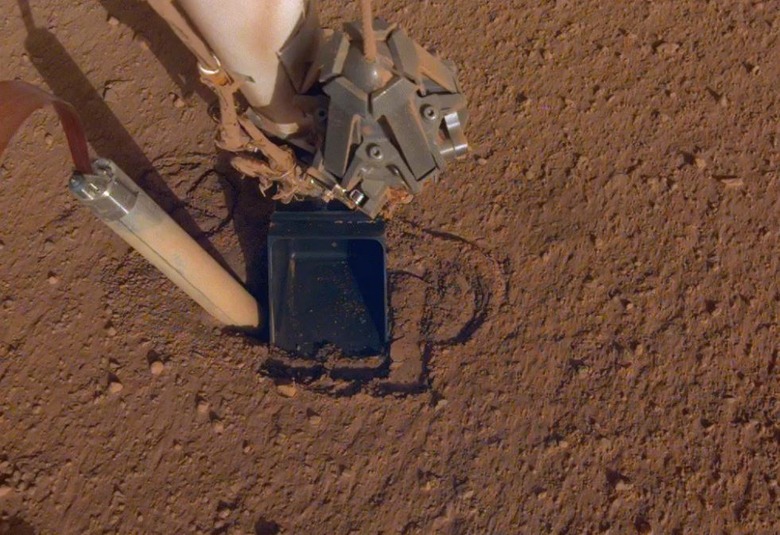NASA Is Desperately Trying To Get Its Mars Mole Digging Again
NASA's InSight mission to Mars has been successful on a number of fronts, but there's no denying that there's been one very big disappointment: the mole. A self-burying instrument designed to hammer itself up to 16 feet into the surface of Mars has repeatedly fallen well short of this goal. In fact, at the moment it's basically just sitting on the surface.
The InSight team believes that the soil on the planet's surface is simply too powdery and loose for the instrument to gain traction and pull itself deeper. To fix this, the team used InSight's robotic arm to push against the edge of the hole, giving the probe a better grip. This new technique appeared to work for a bit, but it wasn't long before Mars barfed the probe back up. Bummer.
Now, after much consideration and heaps of frustration, NASA's InSight team has finally decided to pull out all the stops. Rather than trying to get the mole to dig on its own, the team is now planning to direct InSight to literally push the probe into its hole using its robotic arm. It's the most basic and straightforward "fix" proposed so far, but NASA is starting to run out of ideas.
According to NASA's Jet Propulsion Laboratory:
The mission team plans to command the scoop on InSight's robotic arm to press down on the "mole," the mini pile driver designed to hammer itself as much as 16 feet (5 meters) down. They hope that pushing down on the mole's top, also called the back cap, will keep it from backing out of its hole on Mars, as it did twice in recent months after nearly burying itself.
But pulling off this new trick isn't just a matter of jamming the probe down as hard as the robotic arm can push. The tether affixed to the top of the probe sends back all the vital data to the InSight lander itself, which then relays that info to Earth and the eager scientists. Damaging that tether would render the probe totally useless, so the operation has to be delicate.
The scientists will be working on getting the mole working through early March, so we won't have to wait long before we know whether or not the plan is working.
